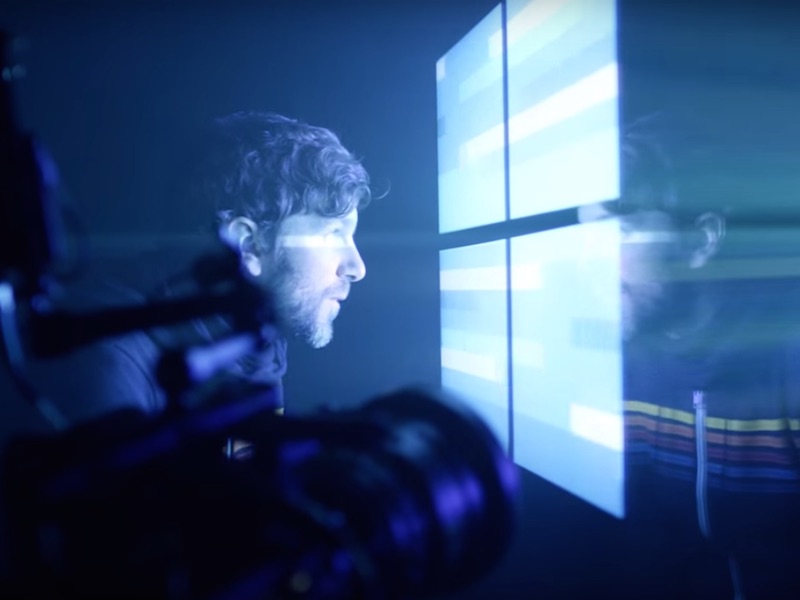- Home
- Laptops
- Laptops News
- Microsoft Likely Has Your Windows 10 Recovery Key, and That's Bad: Report
Microsoft Likely Has Your Windows 10 Recovery Key, and That's Bad: Report

Microsoft may be putting the privacy of millions of users at risk. The built-in disk encryption feature in Windows 10, the latest desktop operating system from the company, is set to automatically upload your recovery key to Microsoft's servers, making it vulnerable in an event of a security breach.
Windows 10 ships with a device encryption feature that is enabled by default. While this has its own benefits such as ensuring your data is protected on the computer, for those who use a Microsoft account (Outlook/Live email) as a method of signing in, this also means that Microsoft has a stored your disk encryption key, reports The Intercept.
The issue, as you can imagine, is that if a person hacks into your Microsoft account, they can access this recovery key. Also, if a fraudster hacks into Microsoft's server, in that event too your privacy is pretty much compromised. There are many more scenarios in which an unauthorised personnel can glean access to your computer's recovery key.
Now in Microsoft's defence, this feature is genuinely useful. At times, you would want your recovery key to be available at a secure place, making it easier for you to log in with your Microsoft account. However, the potential privacy risk it imposes on the account perhaps makes it less worthy. Many Windows Insider participants are likely vulnerable as they are required to use Microsoft account and are likely using it to sign in to their system as well. As of early July of this year, more than 5 million users were signed up as a Windows Insider participant.
The report adds that users who utilise their organisation's email address to sign in, their keys aren't stored in Microsoft's server. So what needs to be done for the rest? You can check if your key is stored in the cloud by visiting this website . You can delete your key from your account to avoid any risk, and Microsoft says all copies will be wiped from its servers and backup drives. Those who don't see any key associated with their Microsoft account probably didn't use their Microsoft account to sign in, or they don't have device encryption enabled. Users who don't have the encryption option visible in Settings need not worry as they are probably using older machines without the Trusted Platform Module (TPM) required for device encryption.
Windows Pro and Windows Enterprise users can use the premium disk encryption service like BitLocker or a third-party tool to generate a new key. Users are recommended to store their new key by either printing it on a piece of paper or on a USB disk, and keeping it some place safe.
Catch the latest from the Consumer Electronics Show on Gadgets 360, at our CES 2026 hub.
- Samsung Galaxy Unpacked 2025
- ChatGPT
- Redmi Note 14 Pro+
- iPhone 16
- Apple Vision Pro
- Oneplus 12
- OnePlus Nord CE 3 Lite 5G
- iPhone 13
- Xiaomi 14 Pro
- Oppo Find N3
- Tecno Spark Go (2023)
- Realme V30
- Best Phones Under 25000
- Samsung Galaxy S24 Series
- Cryptocurrency
- iQoo 12
- Samsung Galaxy S24 Ultra
- Giottus
- Samsung Galaxy Z Flip 5
- Apple 'Scary Fast'
- Housefull 5
- GoPro Hero 12 Black Review
- Invincible Season 2
- JioGlass
- HD Ready TV
- Laptop Under 50000
- Smartwatch Under 10000
- Latest Mobile Phones
- Compare Phones
- Honor Magic 8 RSR Porsche Design
- Honor Magic 8 Pro Air
- Infinix Note Edge
- Lava Blaze Duo 3
- Tecno Spark Go 3
- iQOO Z11 Turbo
- OPPO A6c
- Samsung Galaxy A07 5G
- Lenovo Yoga Slim 7x (2025)
- Lenovo Yoga Slim 7a
- Lenovo Idea Tab Plus
- Realme Pad 3
- Moto Watch
- Garmin Quatix 8 Pro
- Haier H5E Series
- Acerpure Nitro Z Series 100-inch QLED TV
- Asus ROG Ally
- Nintendo Switch Lite
- Haier 1.6 Ton 5 Star Inverter Split AC (HSU19G-MZAID5BN-INV)
- Haier 1.6 Ton 5 Star Inverter Split AC (HSU19G-MZAIM5BN-INV)


![[Sponsored] Haier C90 OLED TV | Dolby Vision IQ, 144Hz OLED and Google TV in Action](https://www.gadgets360.com/static/mobile/images/spacer.png)









